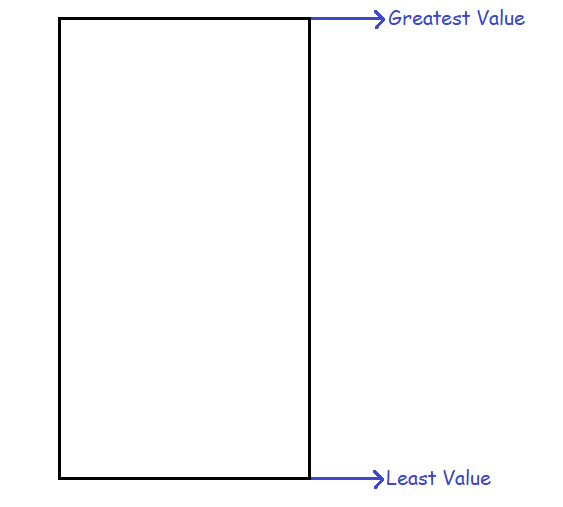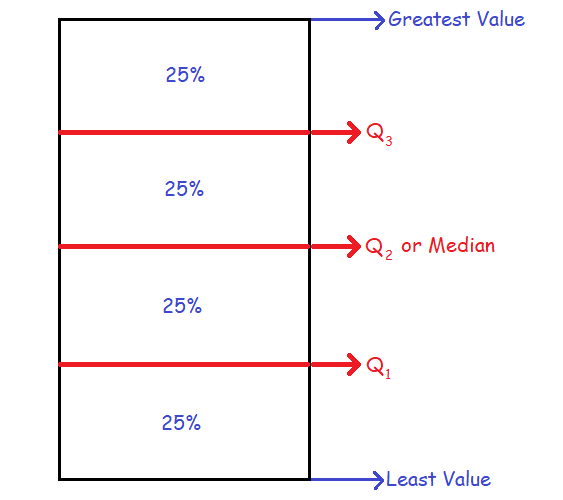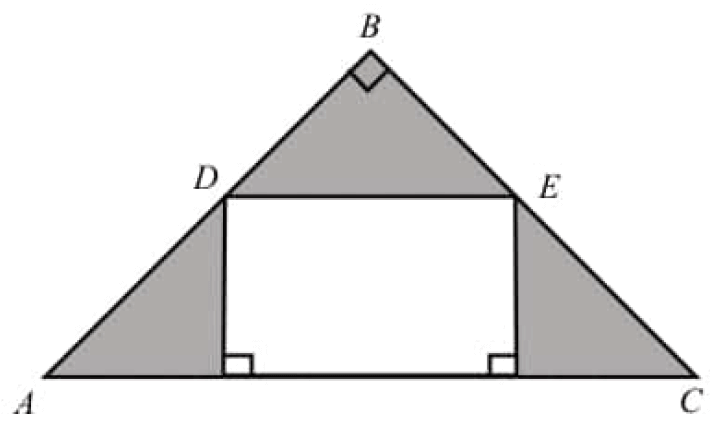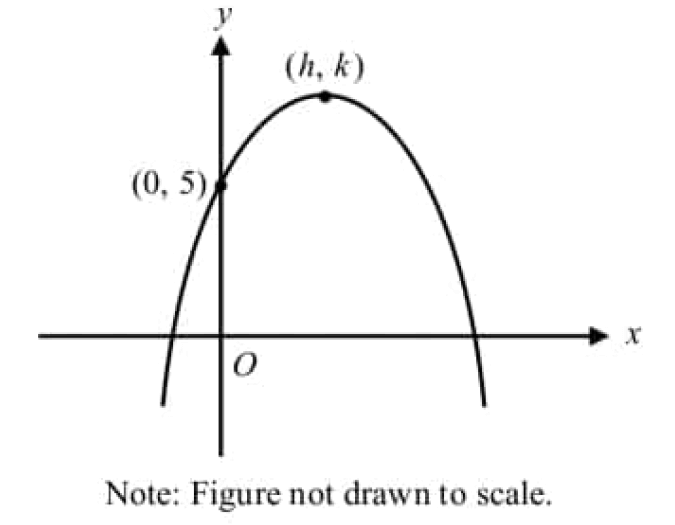QUARTILES IN STATISTICS
Quartiles are the values which divide the given data into four equal parts. To deal with quartiles, first we have to arrange the values in the given data in ascending order, that is, from least to greatest. Assume a rectangle, where the data is arranged from least to greatest as shown below.

If we want to divide the rectangle above into four equal parts, we need three lines in the middle at equal distance. Those three lines are called quartiles.

In the picture above,
Q1 ----> first or lower quartile
Q2 ----> second quartile or median
Q3 ----> third or upper quartile
Since quartiles divide a data into four equal parts, they can also be called as partition values.
Formulas to Find Quartiles
Let n be the number of values in a data.
Arrange the data in ascending order (from least to greatest).
Q1 = [⁽ⁿ ⁺ ¹⁾⁄₄]th value
Q2 = [⁽ⁿ ⁺ ¹⁾⁄₂]th value
Q3 = [³⁽ⁿ ⁺ ¹⁾⁄₄]th value
Example 1 :
Following are the wages of the 11 labourers :
$82, $56, $90, $50, $48, $99, $77, $75, $80, $97, $65
Find Q1, Q2 and Q3 for the above data.
Solution :
Arrange the given data in ascending order :
$48, $50, $56, $65, $75, $77, $80, $82, $90, $97, $99
To get the first quartile, find the value of ⁽ⁿ ⁺ ¹⁾⁄₄.
= ⁽ⁿ ⁺ ¹⁾⁄₄
= ⁽¹¹ ⁺ ¹⁾⁄₄
= ¹²⁄₄
= 3
First Quartile (Q1) :
= [⁽ⁿ ⁺ ¹⁾⁄₄]th value in the ascending order of the data
= 3rd value in the ascending order of the data
= $56
To get the second quartile, find the value of ⁽ⁿ ⁺ ¹⁾⁄₂.
= ⁽ⁿ ⁺ ¹⁾⁄₂
= ⁽¹¹ ⁺ ¹⁾⁄₂
= ¹²⁄₂
= 6
Second Quartile or Median (Q2) :
= [⁽ⁿ ⁺ ¹⁾⁄₂]th value in the ascending order of the data
= 6th value in the ascending order of the data
= $77
To get the third quartile, find the value of ³⁽ⁿ ⁺ ¹⁾⁄₄.
= ³⁽ⁿ ⁺ ¹⁾⁄₄
= ³⁽¹¹ ⁺ ¹⁾⁄₄
= ³⁽¹²⁾⁄₄
= 3(3)
= 9
Third Quartile (Q3) :
= [³⁽ⁿ ⁺ ¹⁾⁄₄]th value in the ascending order of the data
= 9th value in the ascending order of the data
= $80
Example 2 :
Ten values in of a data are arranged in ascending order as shown below.
12, 14, 17, 19, 26, 31, 33, 45, 49, 58
Find Q1, Q2 and Q3 for the above data.
Solution :
The values in the data are already arranged in ascending order.
12, 14, 17, 19, 26, 31, 33, 45, 49, 58
Find find the value of ⁽ⁿ ⁺ ¹⁾⁄₄.
= ⁽ⁿ ⁺ ¹⁾⁄₄
= ⁽¹⁰ ⁺ ¹⁾⁄₄
= ¹¹⁄₄
= 2.75
First Quartile (Q1) :
= [⁽ⁿ ⁺ ¹⁾⁄₄]th value in the ascending order of the data
= 2.75th value in the ascending order of the data
= 2nd value + 0.75 x difference between the 3rd and 2rd values
= 14 + 0.75(17 - 14)
= 14 + 0.75(3)
= 14 + 2.25
= 16.25
To get the second quartile, find the value of ⁽ⁿ ⁺ ¹⁾⁄₂.
= ⁽ⁿ ⁺ ¹⁾⁄₂
= ⁽¹⁰ ⁺ ¹⁾⁄₂
= ¹¹⁄₂
= 5.5
Second Quartile or Median (Q2) :
= [⁽ⁿ ⁺ ¹⁾⁄₂]th value in the ascending order of the data
= 5.5th value in the ascending order of the data
(5.5 is the exact middle value of 5 and 6. So, you can find the average of 5th and 6th values in the ascending order of the given data to get the second quartile or median)
= 28.5
To get the third quartile, find the value of ³⁽ⁿ ⁺ ¹⁾⁄₄.
= ³⁽ⁿ ⁺ ¹⁾⁄₄
= ³⁽¹⁰ ⁺ ¹⁾⁄₄
= ³⁽¹¹⁾⁄₄
= 3(2.75)
= 8.25
Third Quartile (Q3) :
= [³⁽ⁿ ⁺ ¹⁾⁄₄]th value in the ascending order of the data
= 8.25th value in the ascending order of the data
= 8th value + 0.25 x difference between the 8th and 9th values
= 45 + 0.25(49 - 45)
= 45 + 0.25(4)
= 45 + 1
= 46
Kindly mail your feedback to v4formath@gmail.com
We always appreciate your feedback.
©All rights reserved. onlinemath4all.com
Recent Articles
-
Digital SAT Math Problems and Solutions (Part - 204)
Jul 05, 25 07:47 PM
Digital SAT Math Problems and Solutions (Part - 204) -
Digital SAT Math Problems and Solutions (Part - 203)
Jul 05, 25 10:27 AM
Digital SAT Math Problems and Solutions (Part - 203) -
Digital SAT Math Problems and Solutions (Part - 202)
Jul 04, 25 09:44 AM
Digital SAT Math Problems and Solutions (Part - 202)

